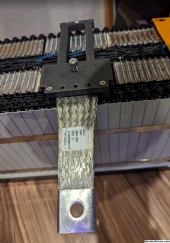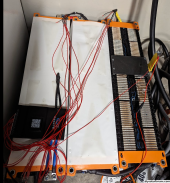TheHappyNomads
New Member
- Joined
- Dec 19, 2022
- Messages
- 139
Awesome, those were the same units I was going to purchase. I plan on using dual LV6548s to charge these from PV array. I looked up the spec sheet and here's what it says...
"Utility Charging Mode MODEL LV 6548 Charging Current (UPS) @ Nominal Input Voltage 120A
Bulk Charging Voltage Flooded Battery 58.4Vdc AGM / Gel Battery 56.4Vdc
Floating Charging Voltage 54Vdc
Overcharge Protection 66Vdc
Charging Algorithm 3-Step"
So, doesn't look like I should push more than 48v out of these modules if I purchase them.
"Utility Charging Mode MODEL LV 6548 Charging Current (UPS) @ Nominal Input Voltage 120A
Bulk Charging Voltage Flooded Battery 58.4Vdc AGM / Gel Battery 56.4Vdc
Floating Charging Voltage 54Vdc
Overcharge Protection 66Vdc
Charging Algorithm 3-Step"
So, doesn't look like I should push more than 48v out of these modules if I purchase them.




